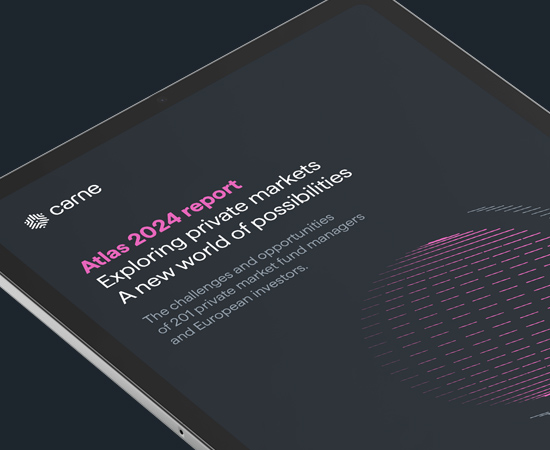Private capital markets – the growth story is set to expand

Introduction
Private markets – private equity, private debt, infrastructure, venture capital, and real estate – have experienced multi-billion-dollar inflows in recent year. With increased opportunity and competition comes pressure on asset managers to deliver products speedily to market while adhering to stringent regulatory demands. This is leading to an increase in fund managers turning to third party specialists who can support them in navigating and complying with the regulatory regime, enabling them to focus on the core of what they do – driving returns and positive outcomes for clients.
In 2005, total assets under management in global private markets was around $1.6 trillion[i], and by June 2023, this has grown more than eight-fold to reach $13.01 trillion driven by a range of “mega forces” and regulatory changes which indicate further rapid expansion.
The climate transition is forcing an overhaul of the world’s infrastructure encompassing travel, energy and technology. Meanwhile a more varied and competitive financial system and the end of zero-rate borrowing is shifting the private debt landscape.
Digital disruption and the proliferation of AI are giving rise to new markets and in turn opportunities for private equity investment. Finally, geopolitical tension, ageing populations, remote working and climate change are all creating new demands on the real estate market.
At the same time, the regulatory environment is constantly evolving, making it easier for institutional and retail investors to invest in capital markets.
The US Inflation Reduction Act (IRA) generated more than $110 billion in new clean-energy manufacturing investments in its first year alone, while the EU has improved its European Long-Term Investment Fund (ELTIF) framework to make it easier for retail investors to put capital to work in private markets.
Not to be outdone, the UK launched Long-Term Asset Funds (LTAFs) in 2023 to provide a UK authorised open-ended fund structure that enables investment in long-term, illiquid assets while offering appropriate structural safeguards.
Given this increasingly positive environment for private markets, we commissioned research with US and UK private market fund managers, and defined contribution pension schemes and wealth managers across Europe to capture their views on the outlook for this sector, and how they see allocations to it changing over the next few years.
The study looks at the outlook for the different private markets, the challenges facing fund managers in raising capital and their plans for addressing these, to how wealth managers and DC pension schemes intend to invest in these markets.
Executive summary
- Research with 201 investors (US and UK private market fund managers, UK and European wealth managers and DC pension schemes) representing $1.93 trillion in combined assets under management (AUM), reveals continued strong growth in private markets. They estimate that the total value of global private market assets will reach $21.08 trillion by 2030 – an $8 trillion (or 62%) increase on the market of today, which latest industry data estimates to be $13.01 trillion.
- European DC schemes expect their sector’s level of investment into private markets to increase by on average 10% over the next three years. Wealth managers anticipate private market investments to account for around 11% of their sector’s AUM by 2030, up from 5% in 2021.
- When considering the reasons for increasing allocations to private markets, the potential to offer greater risk-adjusted returns is a key factor. Sustainability is another key driver, with 98% of DC schemes and 96% of wealth managers agreeing that private markets enable investors to make more of an ESG impact than investing in public markets.
- Respondents also recognised the importance of innovative fund structures for enabling growth in alternative asset classes. Nearly nine in ten wealth managers (88%) expect the level of investment into private markets by wealth managers in the UK and Europe to increase over the next three years because of LTAF/ELTIF opportunities, with 28% expecting that increase to be ‘dramatic’. DC schemes responded similarly, with 78% predicting increased use of these structures and 31% a dramatic rise.
- Nearly nine in ten (88%) of the US-based managers surveyed by Carne Group are already raising capital for private market funds in Europe, and half of the remaining 12% have plans to do so.
- Almost all (94%) of the UK managers surveyed are currently participating in European markets, and the remainder intend to do so within the next 12 to 24 months.
- However, there are a number of hurdles investment managers on both sides of the Atlantic need to overcome to fully seize the private markets opportunity.
- Regulation was cited as a key obstacle to successful European fundraising by US managers, second only to concerns around corporate governance. More than three-quarters (78%) agree that EU regulations around private assets are more complex than their US equivalents, while 68% believe that navigating these regulations will become even harder in the years ahead.
- Turning to solutions for addressing these challenges, the investment managers surveyed expressed a strong inclination towards external support when it comes to launching and raising funds in European markets. The majority (87%) expect their use of outsourcing to increase over the next five years, with 48% of UK managers and 24% of US managers citing reducing regulatory risk as a motivation for doing so.
- Other key reasons that managers identified for increasing their use of third-party specialists include achieving greater speed to market (50% UK; 60% US), the ability to launch different product sets (68% UK; 70% US), and improving transparency for reporting (50% UK; 46% US).







